From the Chicago Reader (March 26, 1993); reprinted in my collection Movies as Politics. — J.R.
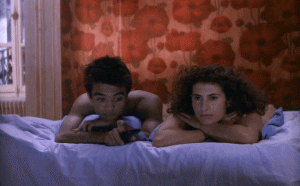
NIGHT AND DAY **** (Masterpiece)
Directed by Chantal Akerman
Written by Akerman and Pascal Bonitzer
With Guilaine Londez, Thomas Langmann, François Negret, Nicole Colchat, Pierre Laroche, and Christian Crahay.
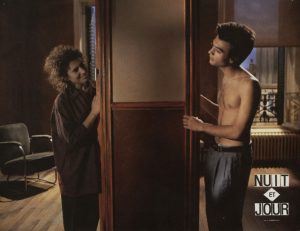


Considering all the oppositions that inform the work of Chantal Akerman — such as painting versus narrative, France versus Belgium, being Jewish versus being French and Belgian, and the commercial versus the experimental — it’s only logical that both the plot and the title of her recent Night and Day, one of her best features to date, should reflect the same pattern. The situation it refers to is so simple that it’s hard to describe without making it sound singsongy: Julie (Guilaine Londez) and Jack (Thomas Langmann) — an infatuated young couple from the provinces who’ve recently come to Paris — live in a small flat near Boulevard Sebastopol. During the day they make love; at night Jack drives a taxi and Julie walks the summer streets, singing happily to herself. One night they meet Joseph (François Negret) — another isolated newcomer to Paris — who drives Jack’s cab during the day. Jack heads for his shift; Julie goes walking with Joseph, and they quickly fall in love. Read more
From the June 1982 American Film. — J.R.
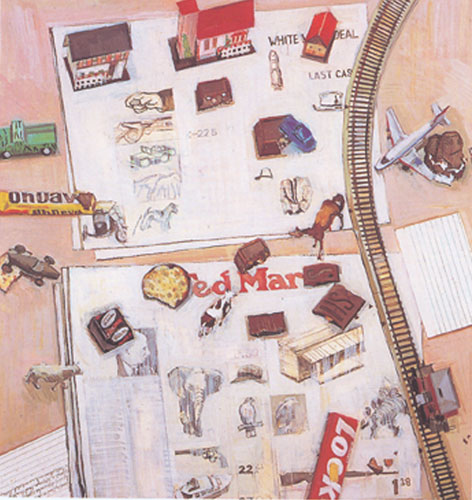
Fans of the brilliant, eccentric, and pioneering film critic Manny Farber who have been regretting his recent absence from the scene simply haven’t been looking in the right places. In fact, the sixty-five-year-old writer, teacher, and former carpenter has been a painter even longer than he’s been a critic, and over the past few years he’s been doing what he calls “auteur” paintings — canvases that recast the subjects and methods of his criticism in a number of fascinating ways.
Using a bird’s-eye view of small objects on a stagelike platform, his paintings, paens to such directors as Howard Hawks [see Howard Hawks II, 1977, 472 x 500, above], Sam Peckinpah, Marguerite Duras, and William Wellman illuminate the filmmakers’ styles and themes. “The compositions and structures are always always based on my take on the directors,” Farber says. “And they’re critical in the fact that I’m usually going away from what I think is known territory, in painting as well as in movies.”
One example of Farber’s oddball approach is his Stan & Ollie, which is full of references to the comedies of Laurel and Hardy, but scarcely uses their faces at all. Read more

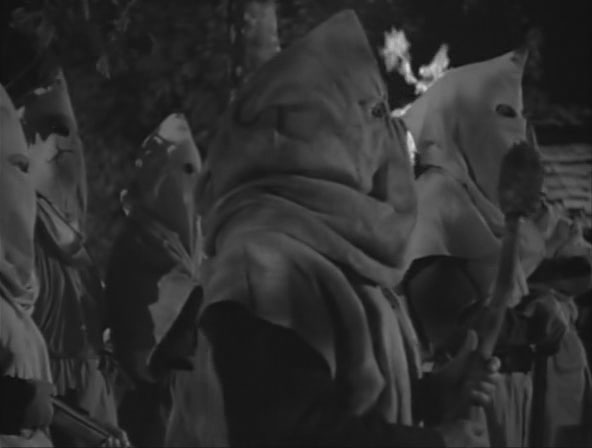
This somber black-and-white drama (1950) about a small-town preacher (Joel McCrea) in the postbellum south, narrated by the boy he raised (Dean Stockwell), is one of the most neglected films in the history of cinema as well as Jacques Tourneur’s favorite among his own pictures. (Best known for Cat People and Out of the Past, Tourneur often seemed to thrive in obscurity, and by agreeing to direct this picture at MGM for practically nothing he reportedly sabotaged his own career.) A view of the American heartland that’s emotionally engaged but still charged with darkness (a typhoid epidemic and a near lynching are among its key episodes), it recalls some of John Ford’s best work in its complex perception of goodness, and I can’t think of many films that convey a particular community with more pungency. Margaret Fitts adapted a novel by Joe David Brown; with Ellen Drew, James Mitchell, Juano Hernandez, Amanda Blake, Louis Stone, and Alan Hale. 89 min. (JR)
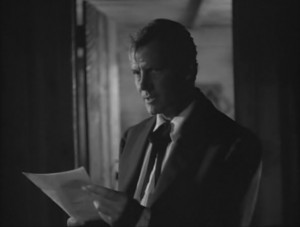
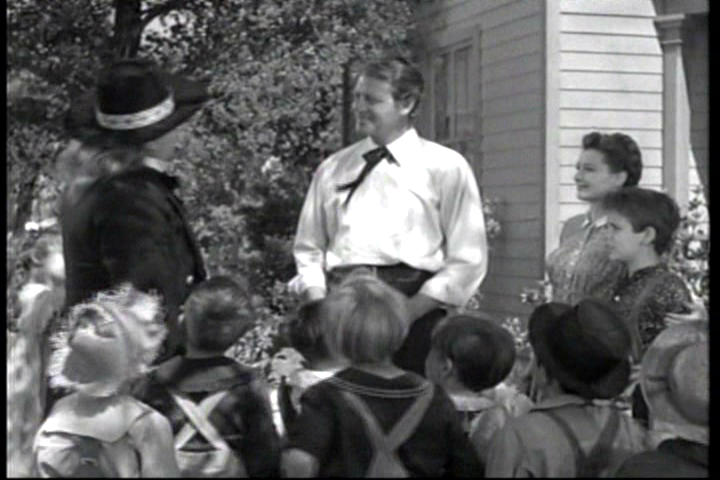
Read more









